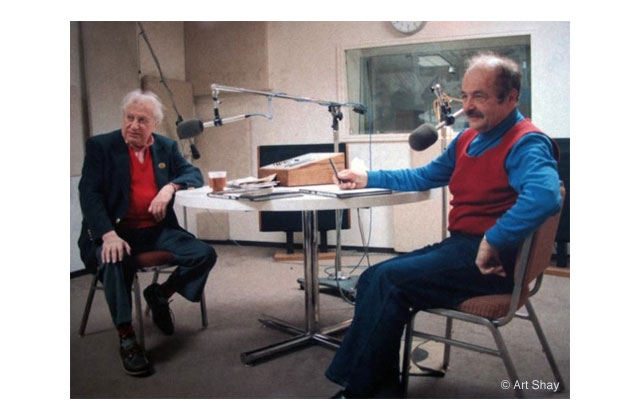Chicago History Museum Announces Winning Theme In Exhibit Crowdsourcing Contest
By Chuck Sudo in Arts & Entertainment on Jan 8, 2014 4:15PM

Studs Terkel and Art Shay discuss Shay's 1988 book Chicago's Nelson Algren on WFMT-FM. (Photo credit: Art Shay, used with permission.)
UPDATE 10:29 a.m.: Chicagoist spoke with Chicago History Museum Public Communications Coordinator Frances Haithcock who explained the research and production process to us.
"Normally when we plan an exhibit we first determine what we have in the museum's archives that can go toward the presentation," Haithcock said. "From there we decide whether to put out a call for more artifacts from private collectors and other resources."
"Since we didn't know what the eventual subject from the History Bowl competition would be before we started it, we had to wait until the process worked itself out," Haithcock said. "Now that we know the theme we can begin the process of strategizing and developing an exhibit based on it." Don't expect the exhibit in the immediate future, however. The process can take months.
The Chicago History Museum on Tuesday announced the winning theme of its "Chicago History Bowl" crowdsourced museum exhibition contest and fans of Chicago's literary history should be elated.
The topic of Chicago Authors garnered more votes than the other themes in the final four—Prohibition, Neighborhoods, and Architecture—and will be researched and presented as a future exhibition at the Museum. (Chicagoist is awaiting a reply from History Muesum spokespeople on when the research will begin and when the eventual exhibition will be added to the museum's schedule.)
The History Museum announced the crowdsourcing competition in late October, the first major museum in the country to seek public input in creating an exhibit. Thousands of responses were whittled to 16 topics of interest including The Great Chicago Fire, Chicago in Pop Culture, Chicago's Women, neighborhoods and labor.